Exploring the dense forests at night reveals a hidden world of rarely seen nocturnal animals. These creatures are masters of stealth, adapted to thrive in the darkness. Each animal has unique characteristics that make it fascinating and elusive. This article delves into the intriguing lives of some of these rare nocturnal inhabitants.
Aye-Aye
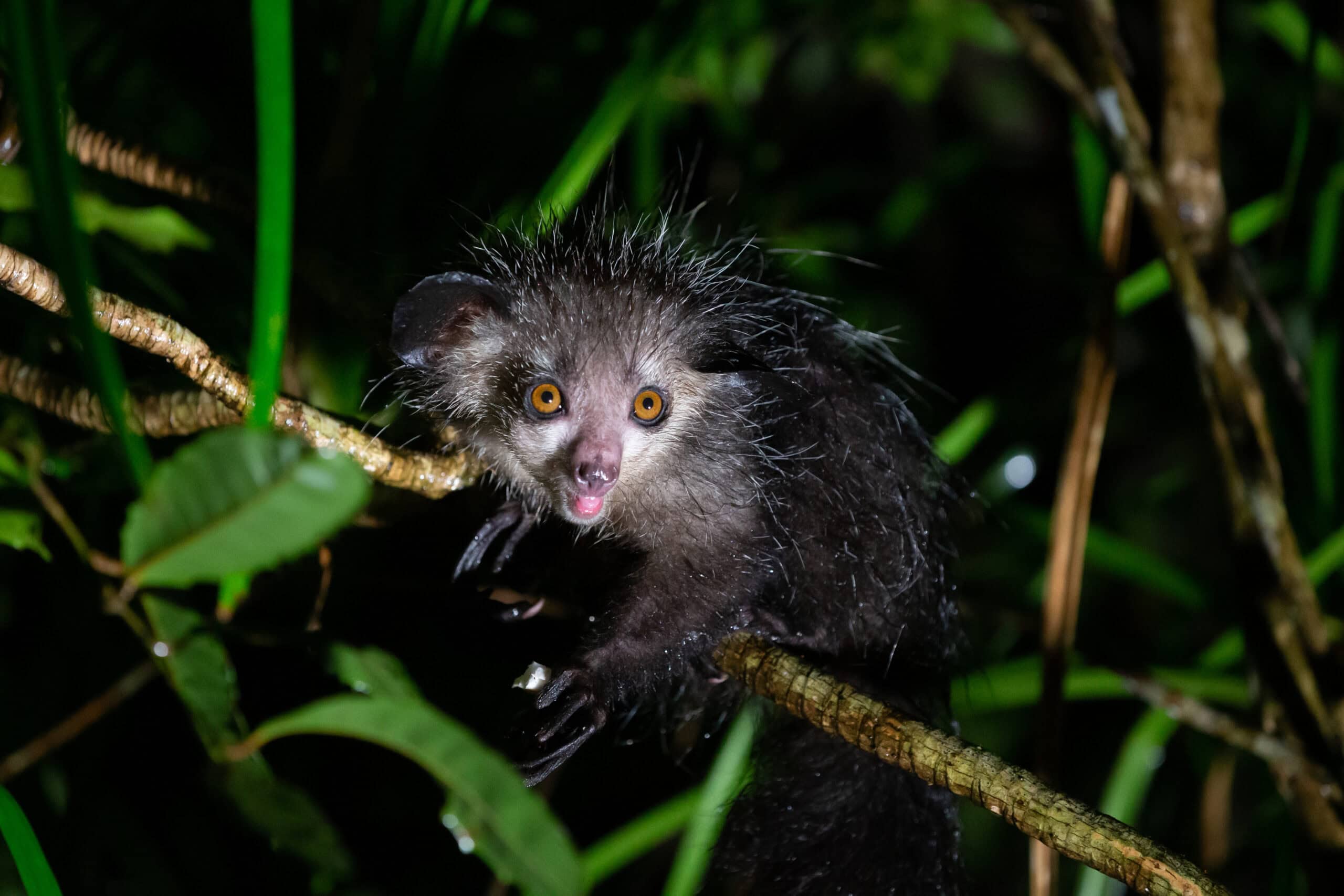
The Aye-Aye, native to Madagascar, is a unique nocturnal primate. Its long, thin middle finger is used to tap on trees and locate insects. This finger also helps it extract grubs from the bark. Aye-Ayes have large, sensitive ears for detecting prey. Their appearance is often described as a mix of a bat and a squirrel. Aye-Ayes have a bushy tail and rodent-like teeth that never stop growing. They are solitary animals and communicate through vocalizations. Their diet consists mainly of insects, fruits, and seeds. Despite their eerie look, they play a vital role in their ecosystem. Sadly, they are endangered due to habitat destruction and local superstitions.
Philippine Tarsier
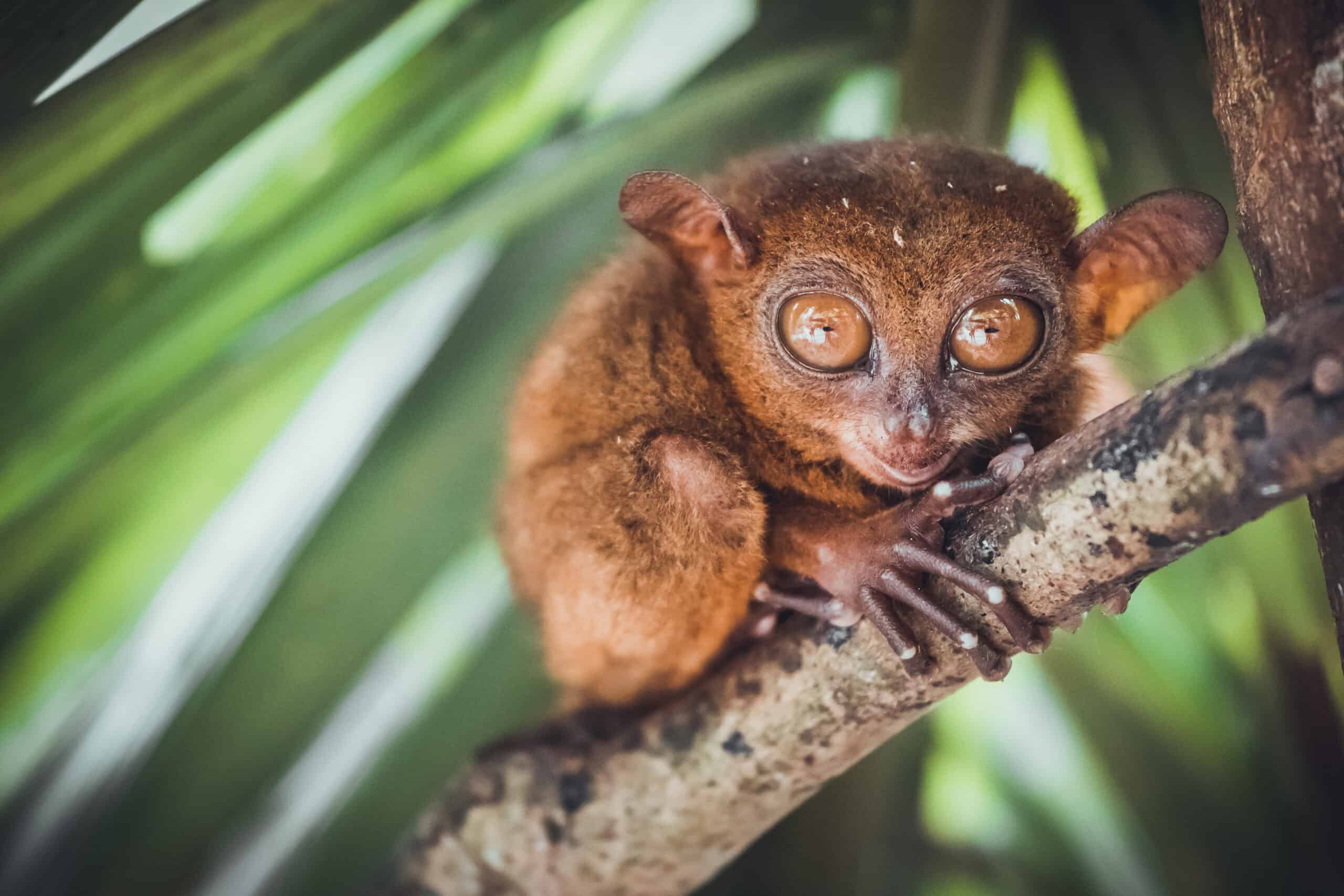
The Philippine Tarsier is one of the smallest primates, found only in the Philippines. These tiny creatures have enormous eyes, perfectly adapted for night vision. Their eyes are fixed in their skulls, so they turn their heads almost 180 degrees to look around. Philippine Tarsiers are adept jumpers, leaping from tree to tree with ease. They have long fingers and toes, which help them grip branches tightly. Tarsiers are insectivores, feeding primarily on insects and small vertebrates. They are solitary and very territorial, often marking their space with scent. Unfortunately, habitat loss and pet trade threaten their survival.
Clouded Leopard
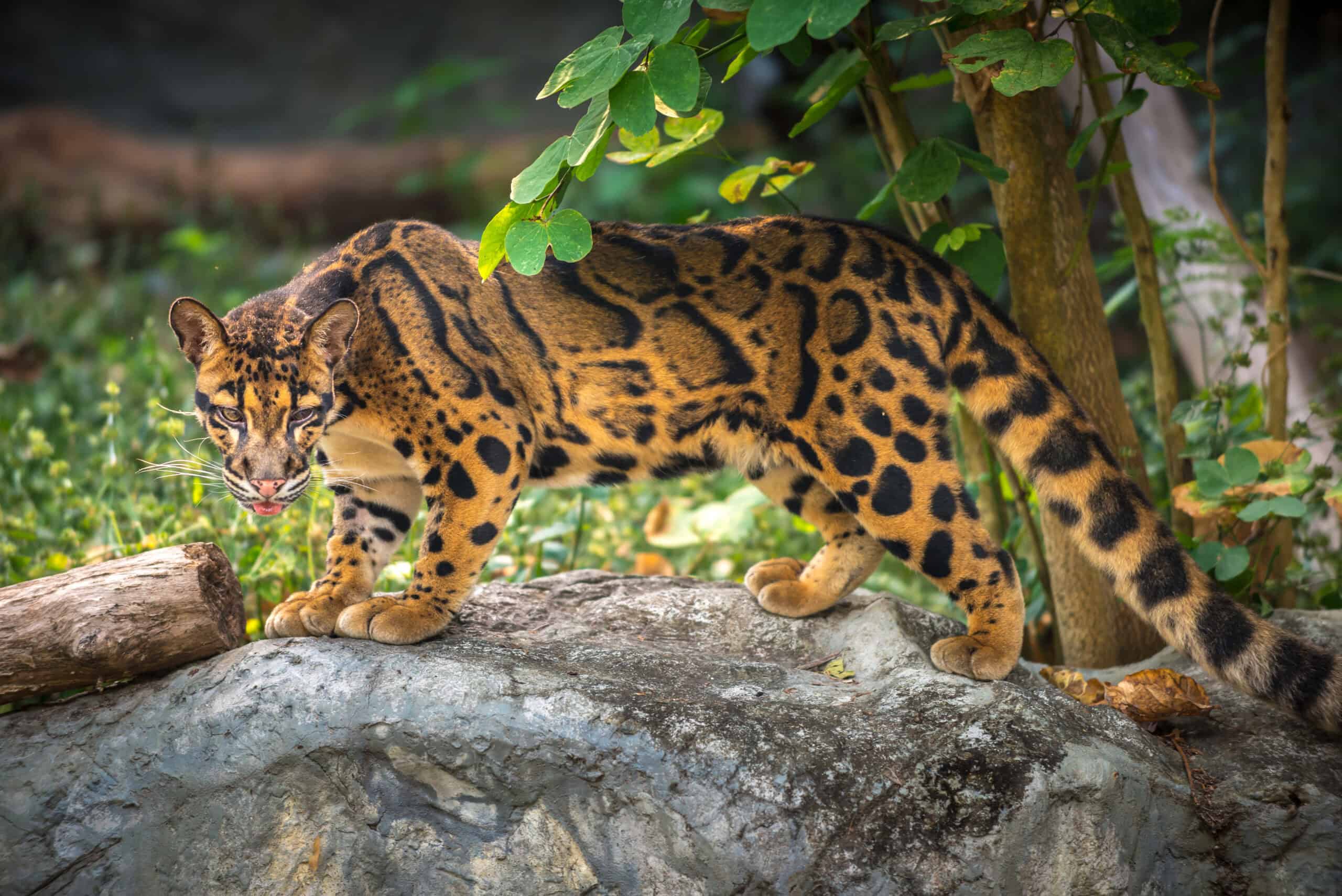
The Clouded Leopard is a medium-sized wild cat found in the forests of Southeast Asia. It has distinctive cloud-like spots on its coat, providing excellent camouflage. These leopards are skilled climbers, often resting on tree branches during the day. At night, they hunt for prey like deer, birds, and monkeys. Clouded Leopards have long canine teeth, resembling those of saber-toothed cats. They are solitary and elusive, rarely seen by humans. Their population is declining due to deforestation and poaching. Conservation efforts are critical to ensure their survival.
Slow Loris
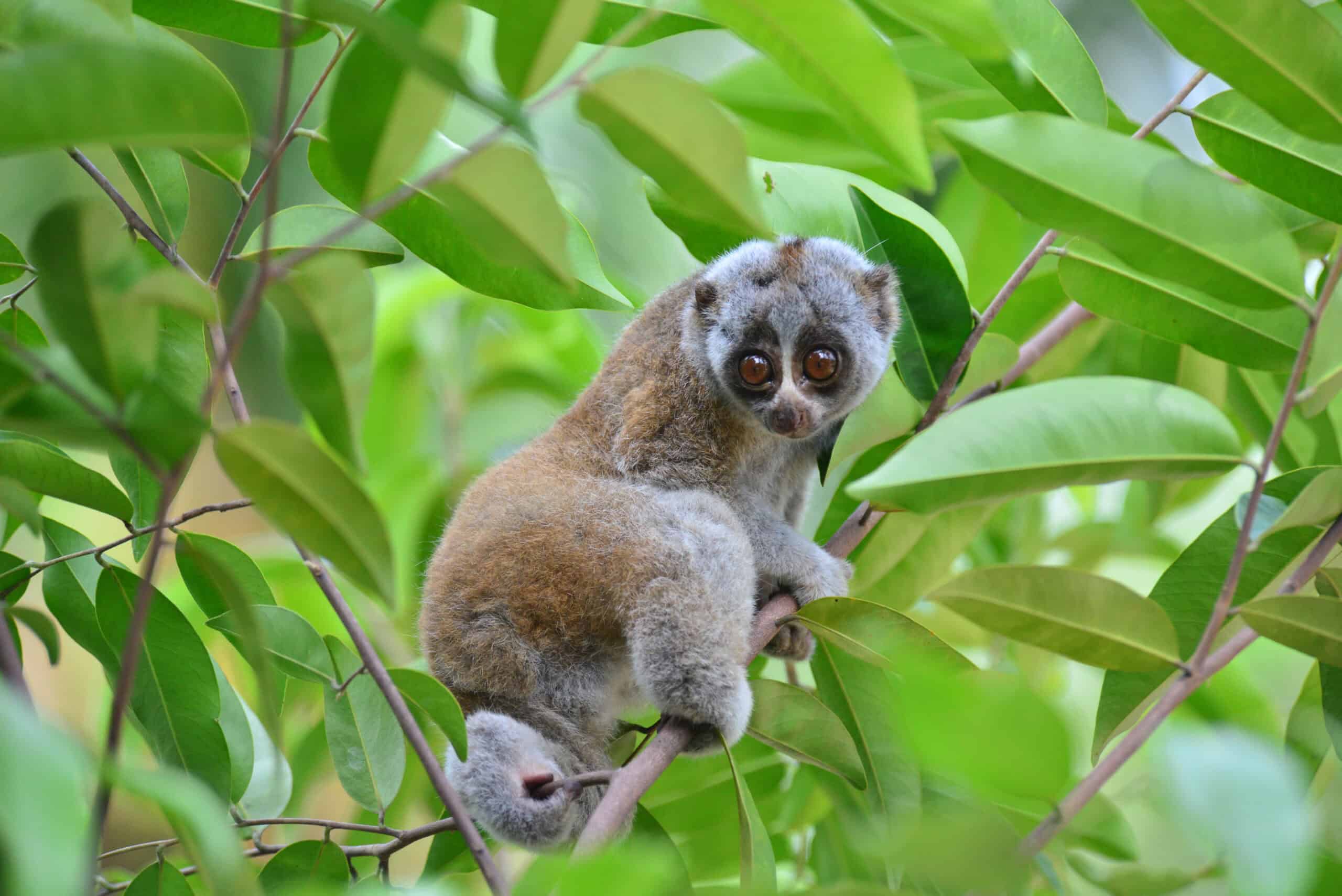
The Slow Loris is a small, nocturnal primate found in Southeast Asia. It has large, round eyes adapted for night vision. Slow Lorises move cautiously through the trees, hence their name. They are one of the few venomous mammals, secreting a toxin from their elbow glands. This toxin is used for defense and can cause severe allergic reactions. Slow Lorises feed on insects, fruits, and tree sap. They are often targeted by the pet trade, which threatens their populations. Education and legal protection are essential to their conservation.
Binturong
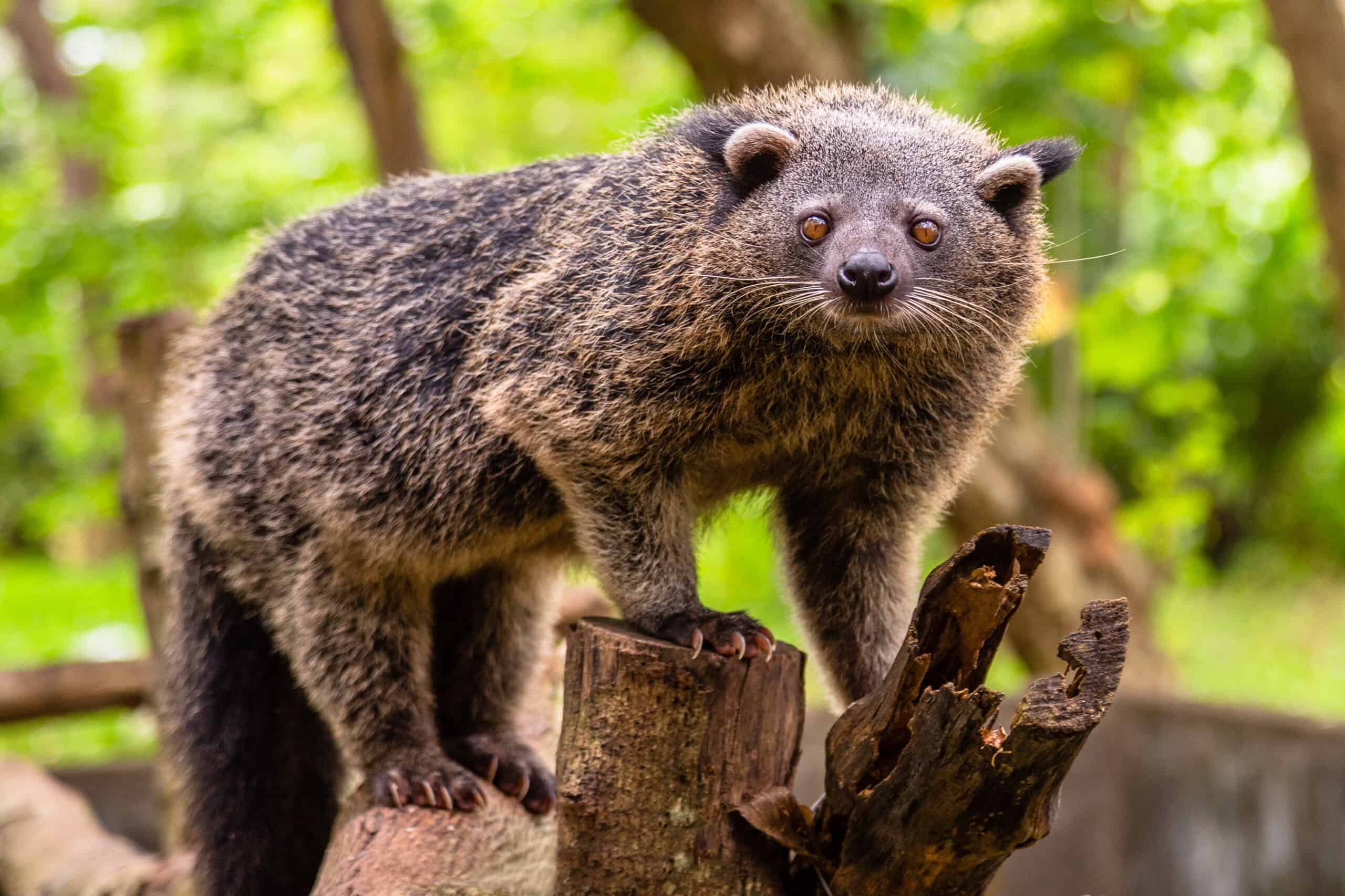
The Binturong, also known as a bearcat, is native to Southeast Asian forests. It has a unique appearance with a long, bushy tail and whisker-like facial hair. Binturongs are excellent climbers, using their prehensile tails for balance. They are primarily nocturnal and have a distinctive scent, often compared to popcorn. Their diet consists of fruits, small animals, and plants. Binturongs are solitary and mark their territory with scent glands. They play an important role in their ecosystem by dispersing seeds. Habitat loss and hunting are major threats to their survival.
Okapi
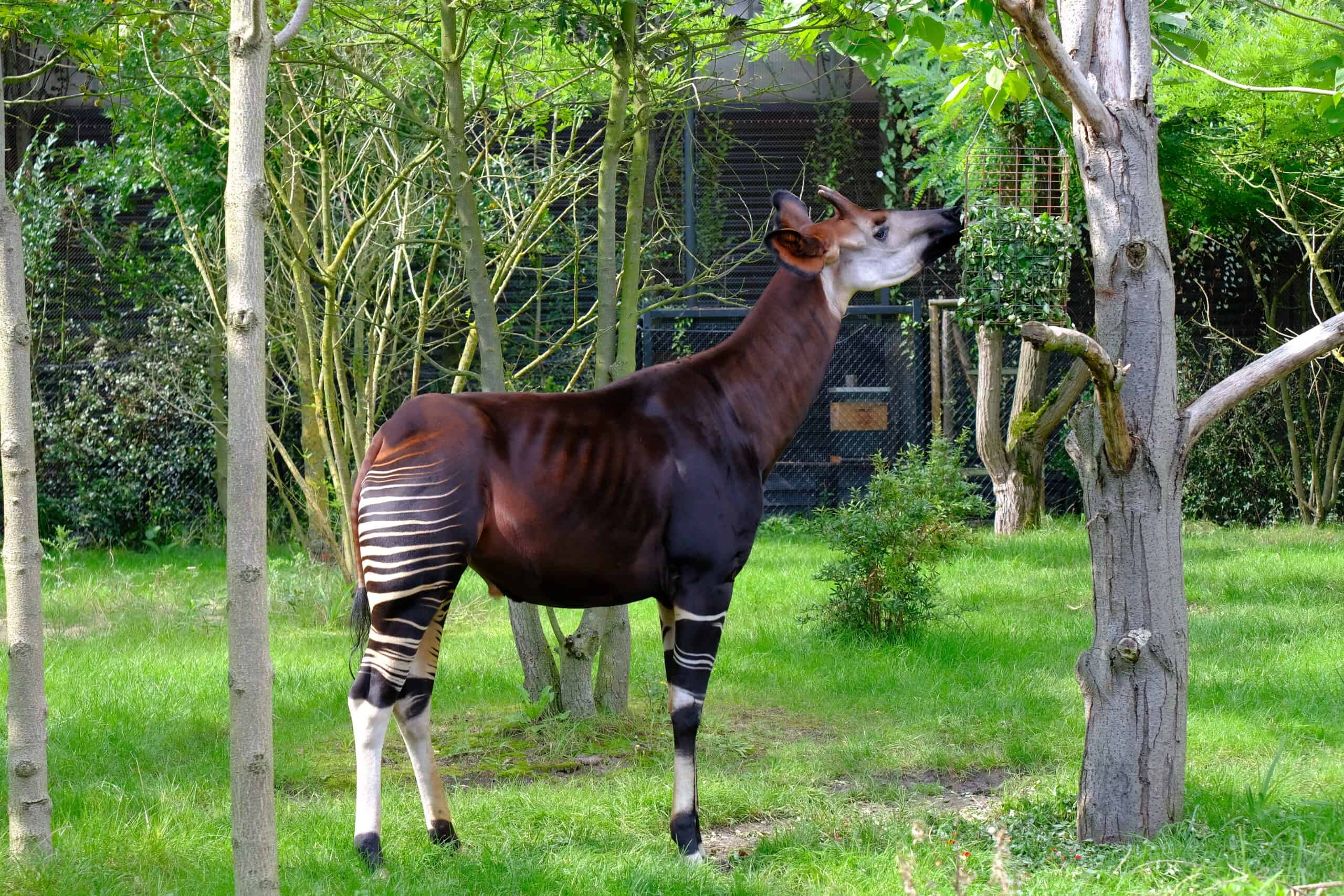
The Okapi, native to the dense forests of the Congo, is a relative of the giraffe. It has a unique appearance with zebra-like stripes on its legs. Okapis are shy and reclusive, making them difficult to spot in the wild. They are primarily nocturnal, feeding on leaves, fruits, and fungi at night. Okapis have long, flexible tongues used for stripping leaves from branches. They communicate through low-frequency sounds inaudible to humans. Conservation efforts are crucial due to habitat destruction and poaching. Okapis are a symbol of the rich biodiversity of their habitat.
Night Monkey
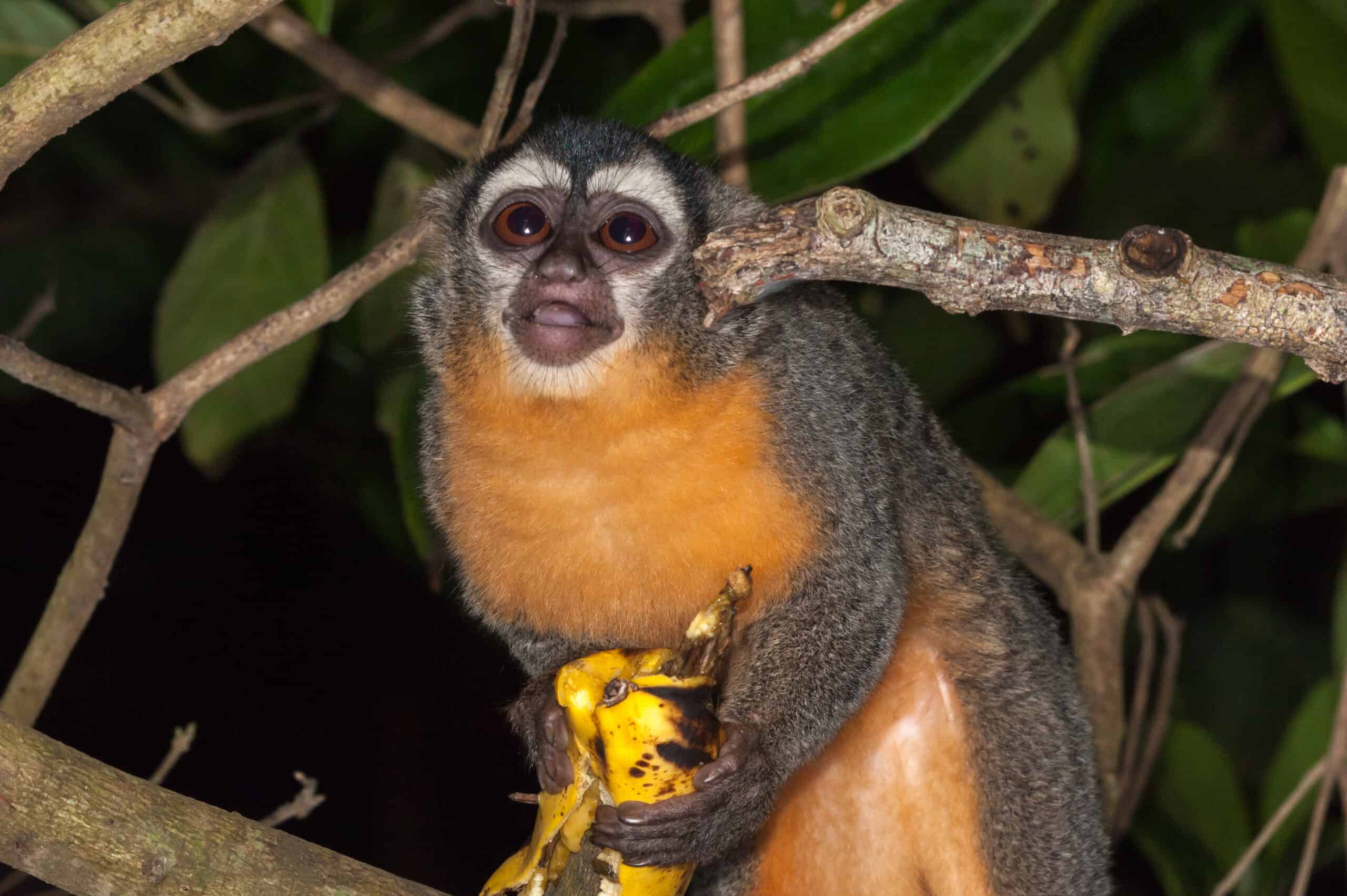
Night Monkeys, also known as owl monkeys, are the only truly nocturnal monkeys. Found in Central and South America, they have large eyes adapted for night vision. These monkeys live in family groups and are highly territorial. They communicate through a series of vocalizations and scent markings. Night Monkeys have a varied diet, including fruits, leaves, and insects. Their nocturnal lifestyle helps them avoid predators and competition. Deforestation and illegal pet trade pose significant threats to their populations. Protecting their habitats is essential for their survival.
Fossa
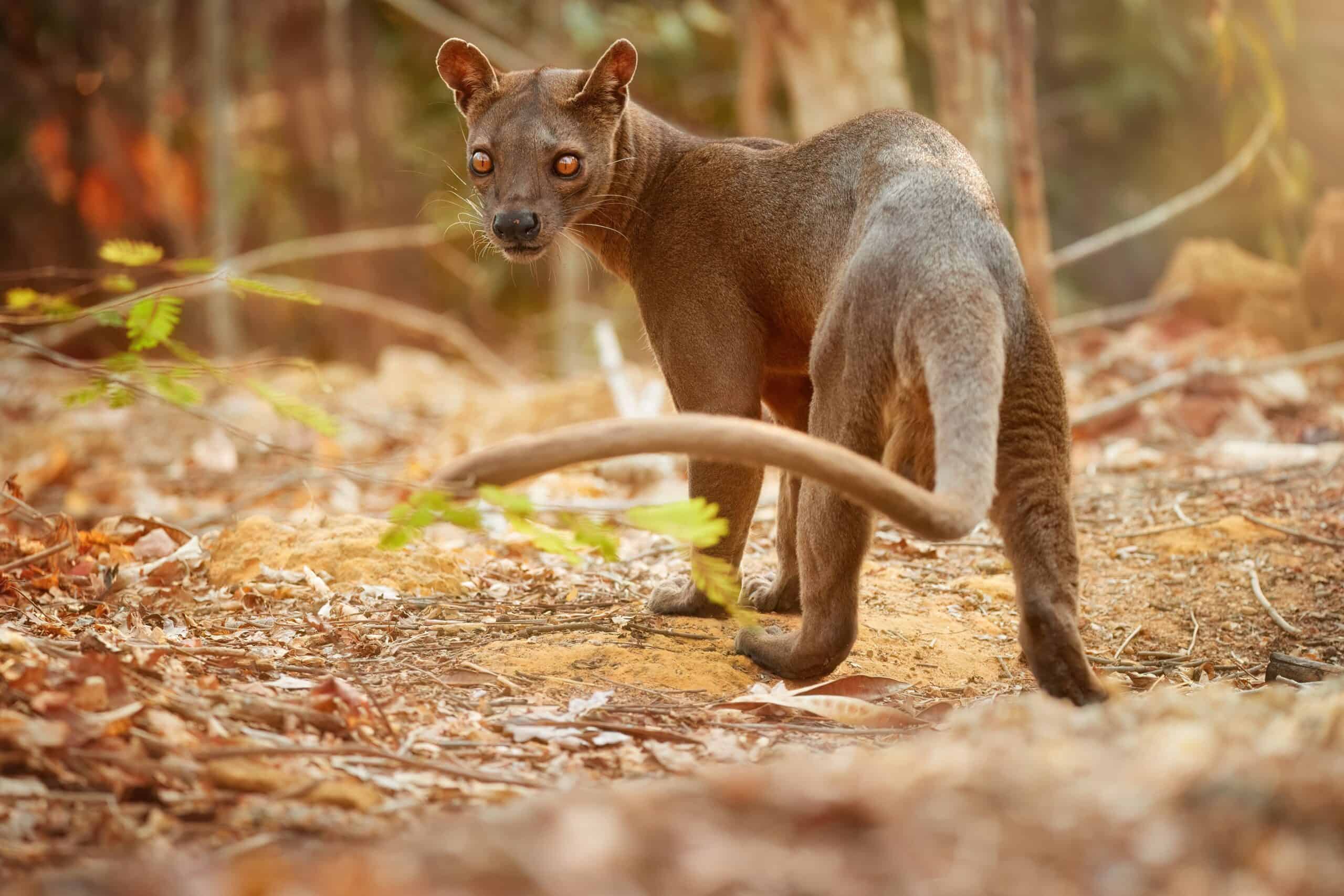
The Fossa is a carnivorous mammal native to Madagascar. It has a sleek, cat-like appearance and is an agile climber. Fossas are nocturnal hunters, preying on lemurs and other small animals. They have a keen sense of smell and sharp claws for catching prey. Fossas are solitary and mark their territory with scent glands. Their population is threatened by habitat loss and hunting. Conservation efforts focus on protecting their natural habitats. Fossas play a crucial role in maintaining the ecological balance in Madagascar’s forests.
Sunda Pangolin
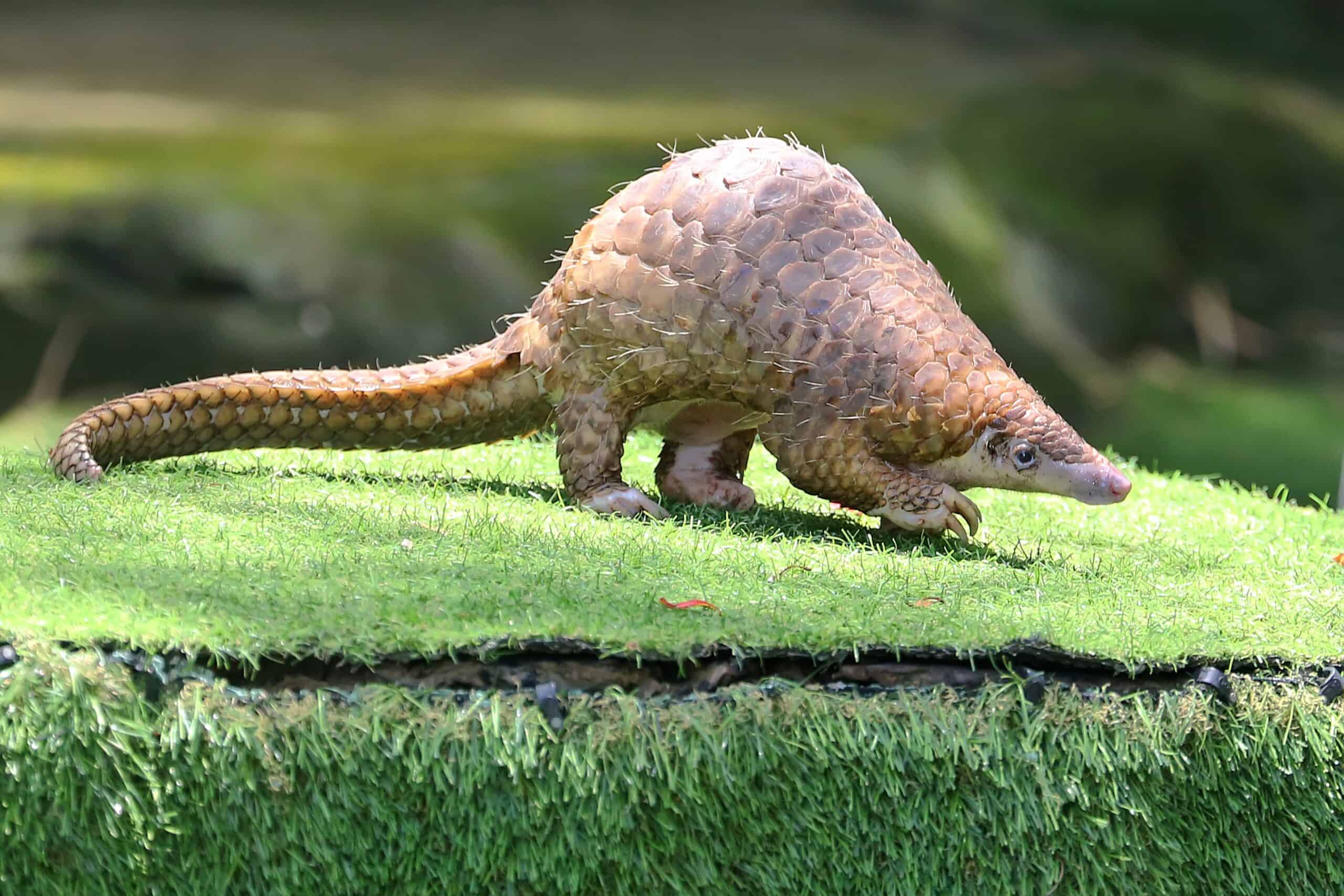
The Sunda Pangolin, found in Southeast Asia, is a nocturnal mammal covered in protective scales. These scales are made of keratin, the same material as human nails. Pangolins are solitary and spend most of their time alone. They use their long tongues to eat ants and termites. Sunda Pangolins roll into a ball when threatened, using their scales as armor. They are heavily trafficked for their meat and scales, making them critically endangered. Conservation efforts are essential to protect these unique creatures. Educating the public about the illegal pangolin trade is crucial.
Kinkajou
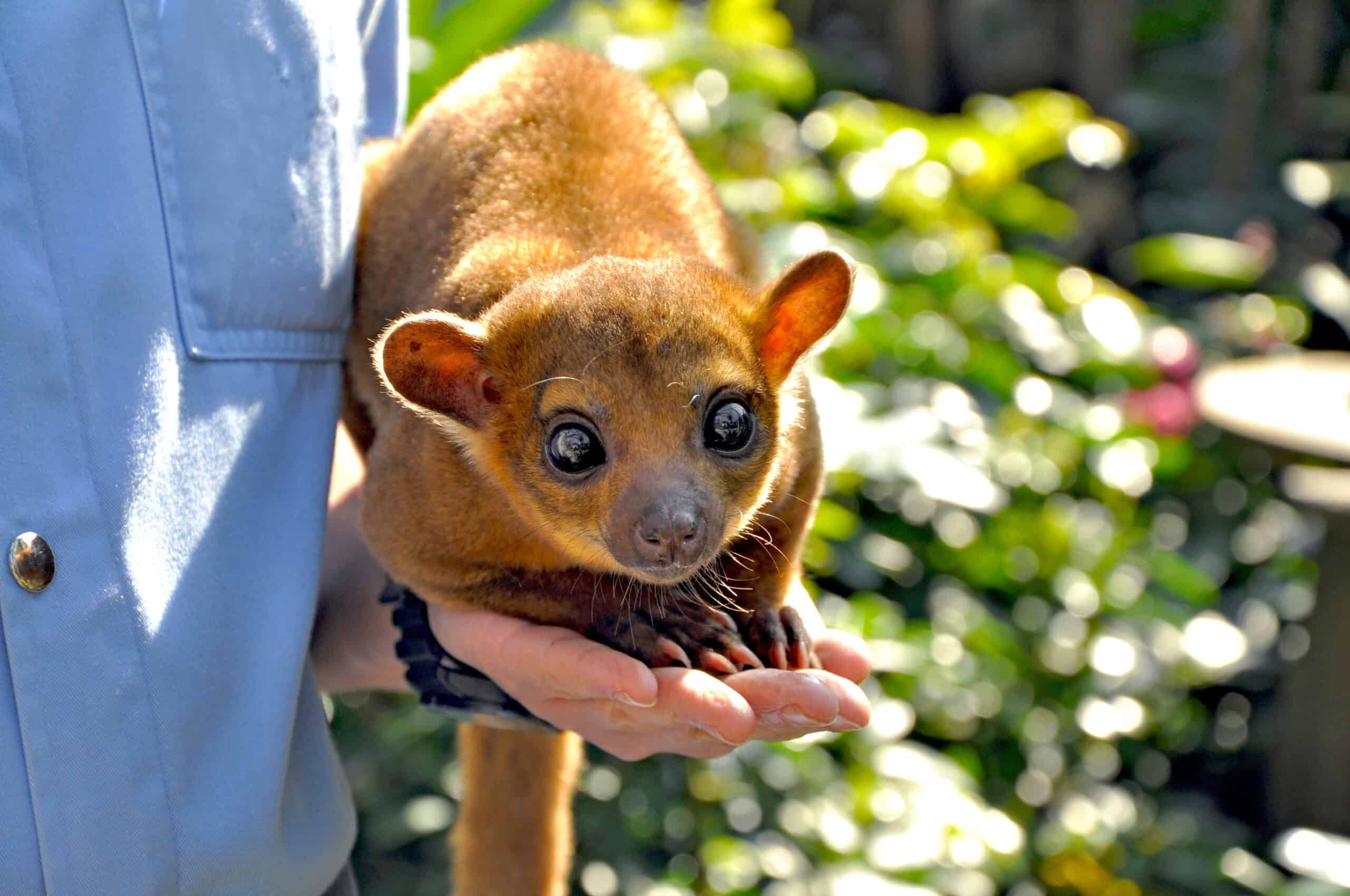
The Kinkajou, also known as the honey bear, is a small mammal native to Central and South American forests. It has a prehensile tail, used for gripping branches, and a long, slender tongue for extracting nectar from flowers. Kinkajous are arboreal, spending most of their lives in trees. They have large eyes adapted for night vision, making them excellent nocturnal foragers. Kinkajous are omnivores, feeding on fruits, insects, and small vertebrates. They are social animals, often found in small groups. Their vocalizations include a range of sounds, from hisses to high-pitched barks. Unfortunately, they face threats from deforestation and the pet trade.
Solenodon
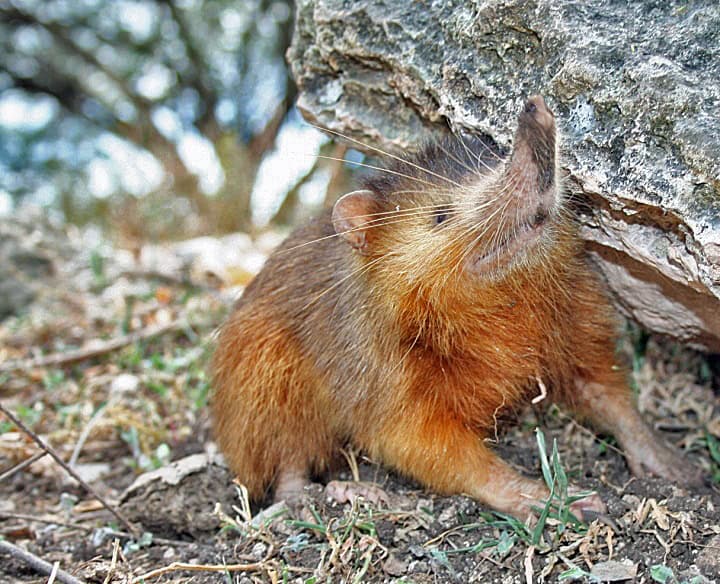
The Solenodon is a rare insectivorous mammal found in the Caribbean. It has a long, flexible snout and sharp teeth for hunting insects and small animals. Solenodons are among the few venomous mammals, delivering a toxic bite to subdue their prey. They have a shuffling gait and are mostly solitary creatures. Their nocturnal lifestyle helps them avoid predators. Solenodons dig burrows for shelter and nesting. Habitat destruction and introduced predators have severely impacted their populations. Solenodons play an important role in their ecosystem by controlling insect populations.
Servaline Genet
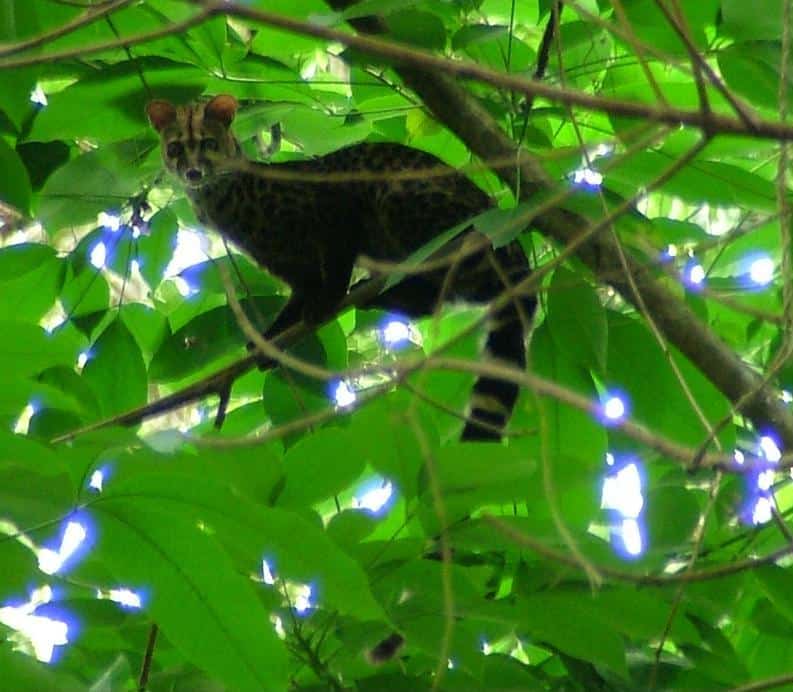
The Servaline Genet is a small carnivorous mammal found in the forests of Africa. It has a slender body, long tail, and distinctive spotted coat. Genets are agile climbers and excellent hunters, preying on small mammals, birds, and insects. They are solitary and primarily nocturnal, relying on their keen sense of smell to locate prey. Servaline Genets mark their territory with scent glands. They have retractable claws, aiding in their climbing ability. Habitat destruction and hunting pose significant threats to their populations.
Bushbaby (Galago)
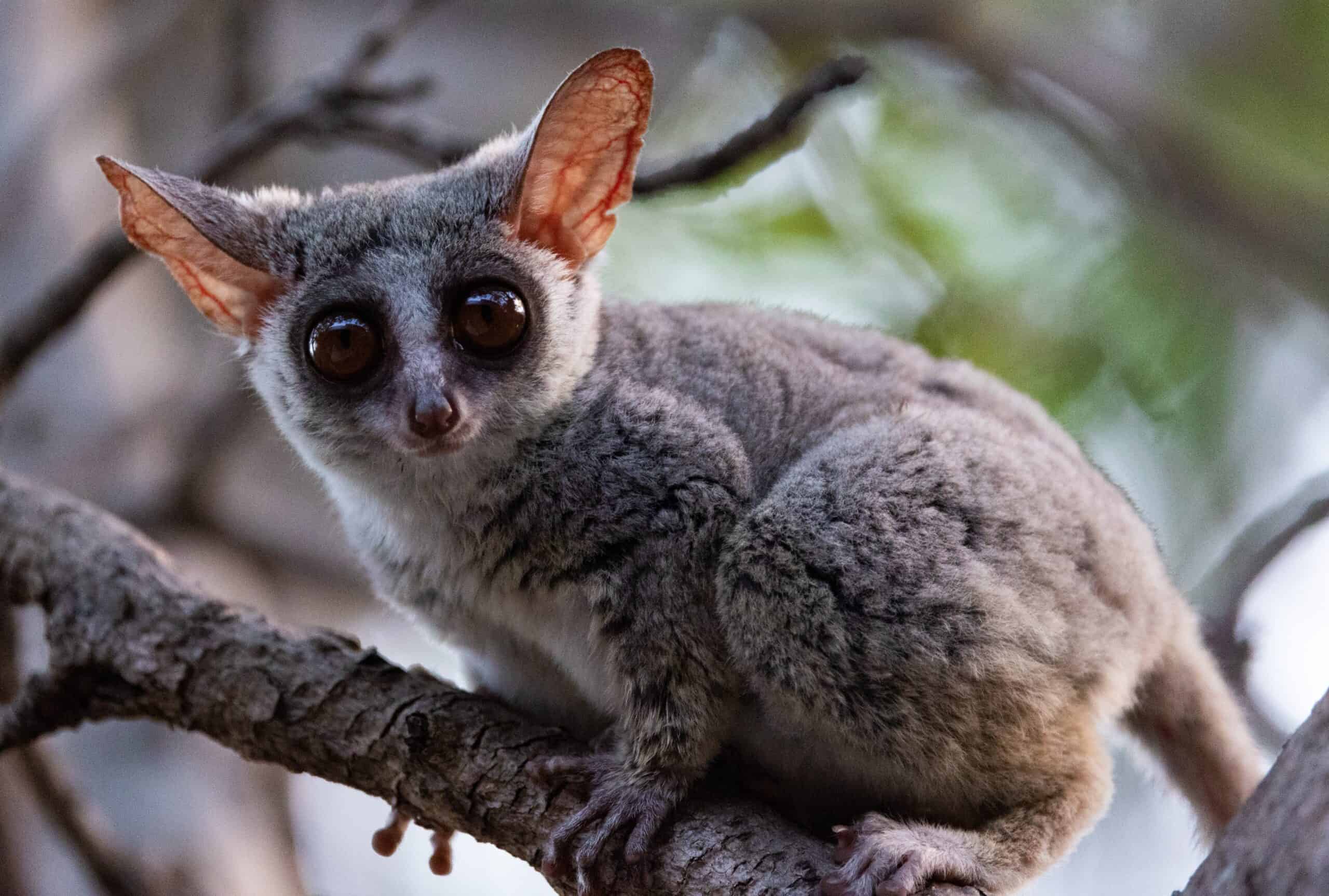
Bushbabies, also known as Galagos, are small primates found in the forests of Africa. They have large, round eyes adapted for night vision. Bushbabies are known for their incredible jumping ability, leaping great distances between trees. They have long fingers and toes, helping them grip branches securely. Bushbabies are omnivores, feeding on fruits, insects, and small vertebrates. They are social animals, living in family groups. Their vocalizations include a range of sounds, from whistles to croaks. Deforestation and the pet trade threaten their populations.
Malayan Colugo (Flying Lemur)
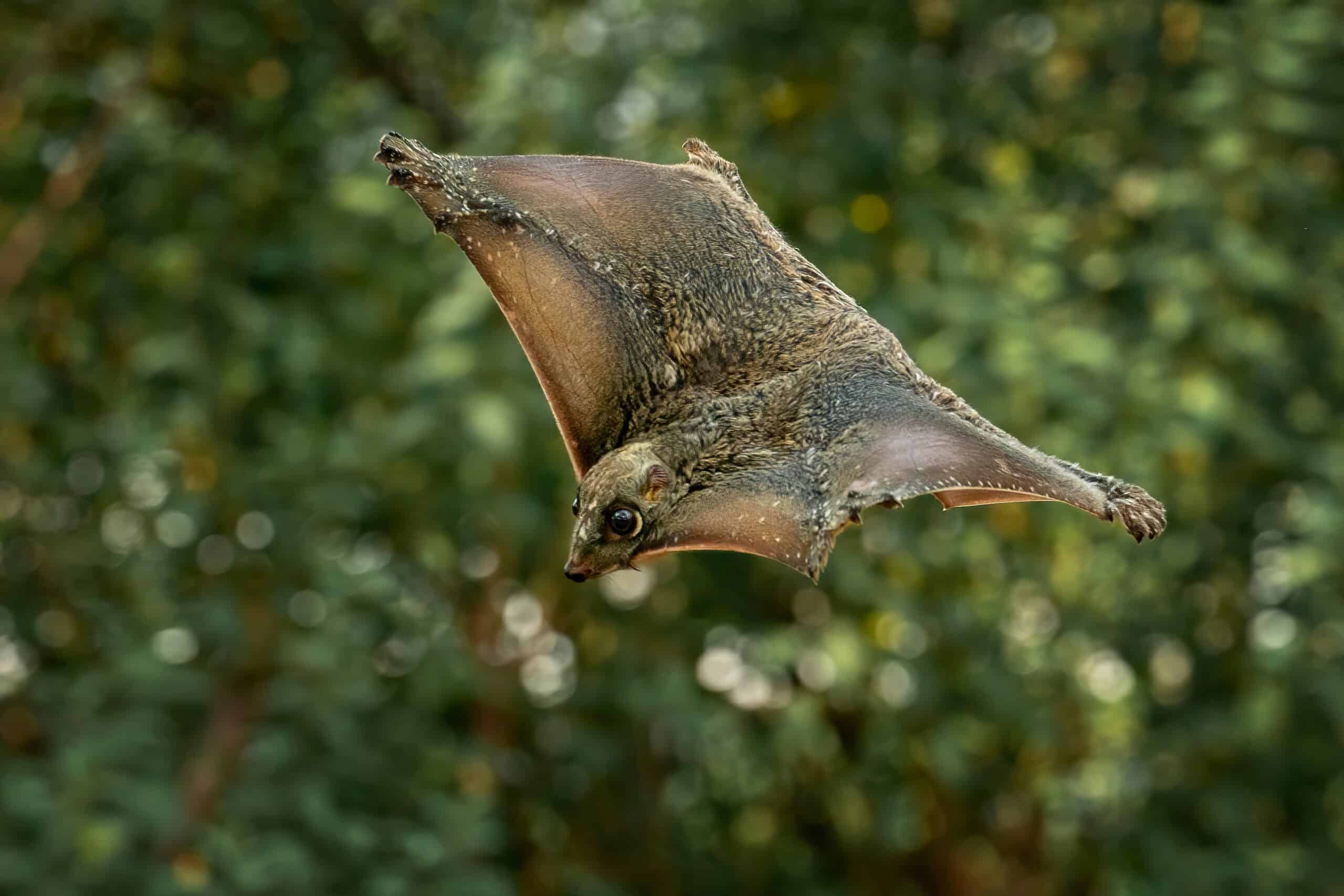
The Malayan Colugo, also known as the flying lemur, is a gliding mammal found in Southeast Asian forests. It has a membrane stretching from its neck to the tips of its fingers, toes, and tail, enabling it to glide long distances between trees. Colugos have large eyes for excellent night vision. They are herbivores, feeding on leaves, flowers, and fruit. Colugos are solitary and primarily nocturnal. They spend their days resting in tree hollows or clinging to tree trunks. Habitat loss and hunting pose significant threats to their populations.
Spectral Bat
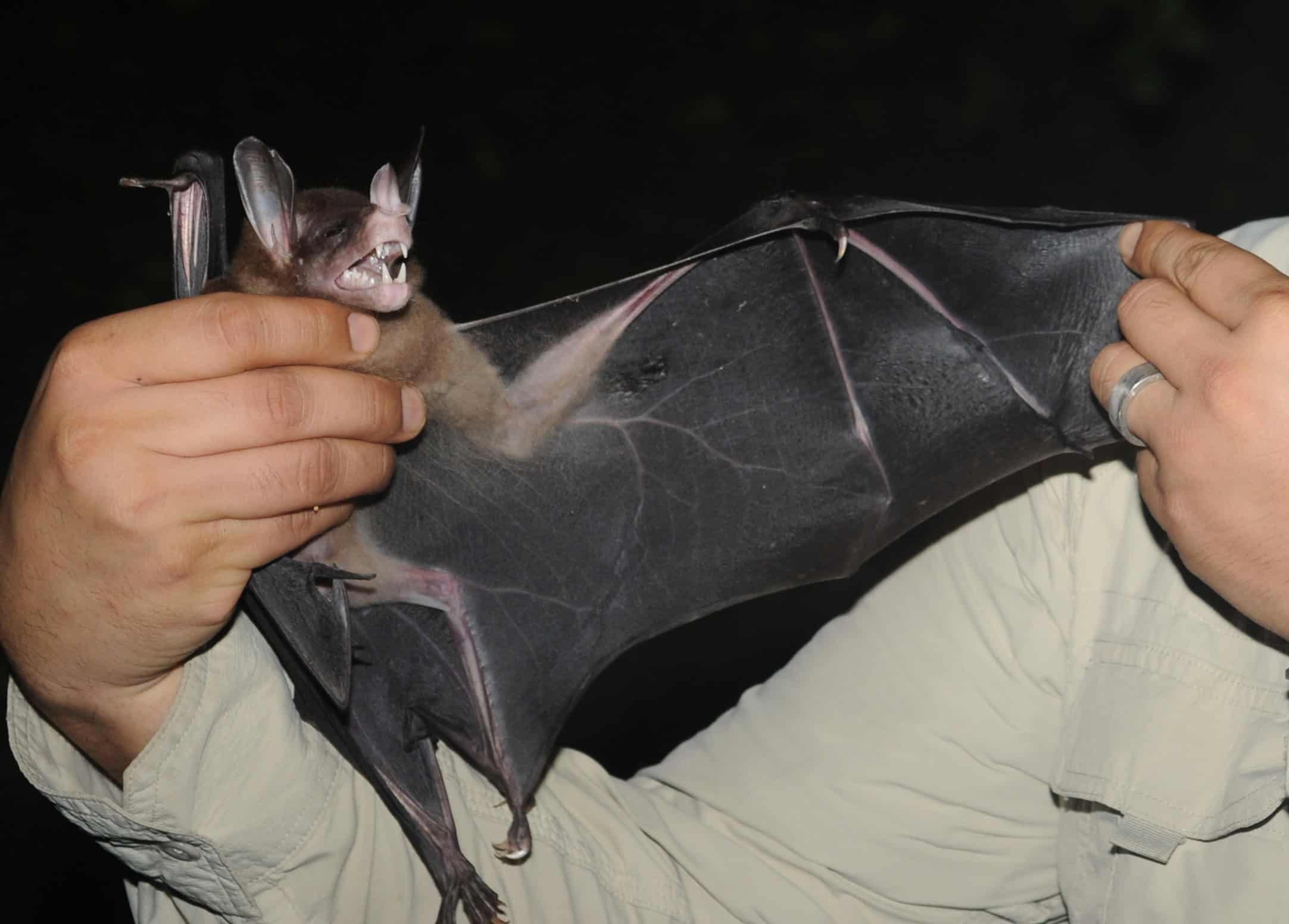
The Spectral Bat, also known as the false vampire bat, is one of the largest bat species found in Central and South American forests. It has a wingspan of up to one meter and a robust body. Spectral Bats are carnivorous, feeding on small mammals, birds, and insects. They have sharp teeth and strong jaws for catching and consuming prey. These bats are solitary or found in small groups. They roost in tree hollows or caves during the day. Spectral Bats are crucial for controlling insect populations and maintaining ecosystem balance. Unfortunately, habitat destruction and human disturbance threaten their populations.
Eastern Quoll
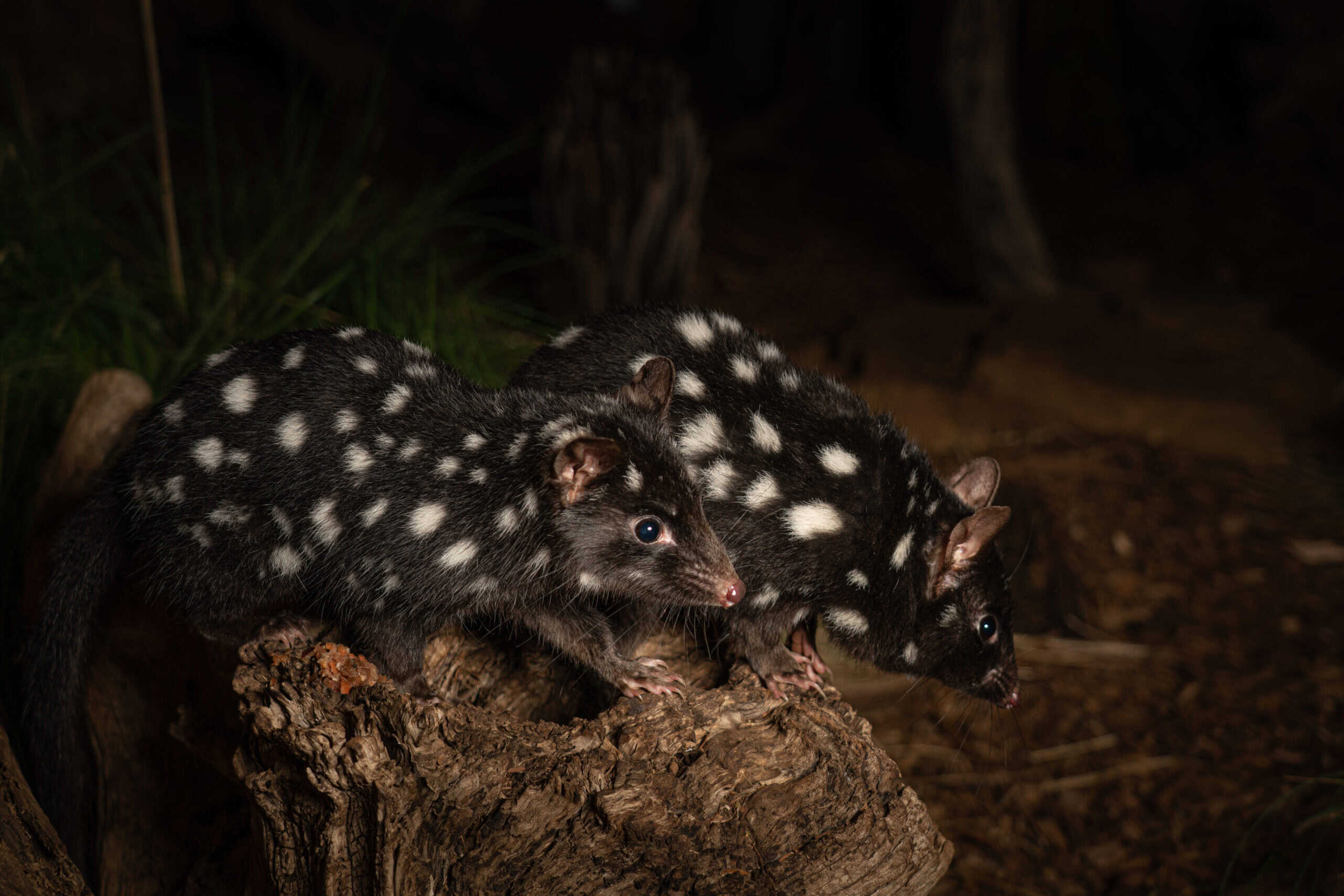
The Eastern Quoll is a small carnivorous marsupial native to Tasmania and parts of mainland Australia. It has a slender body, pointed snout, and spotted coat. Eastern Quolls are nocturnal hunters, preying on insects, small mammals, and birds. They have sharp claws and strong jaws for catching prey. These marsupials are solitary and territorial. They communicate through a range of vocalizations and scent markings. Habitat destruction, introduced predators, and disease have significantly impacted their populations.
Brown Kiwi
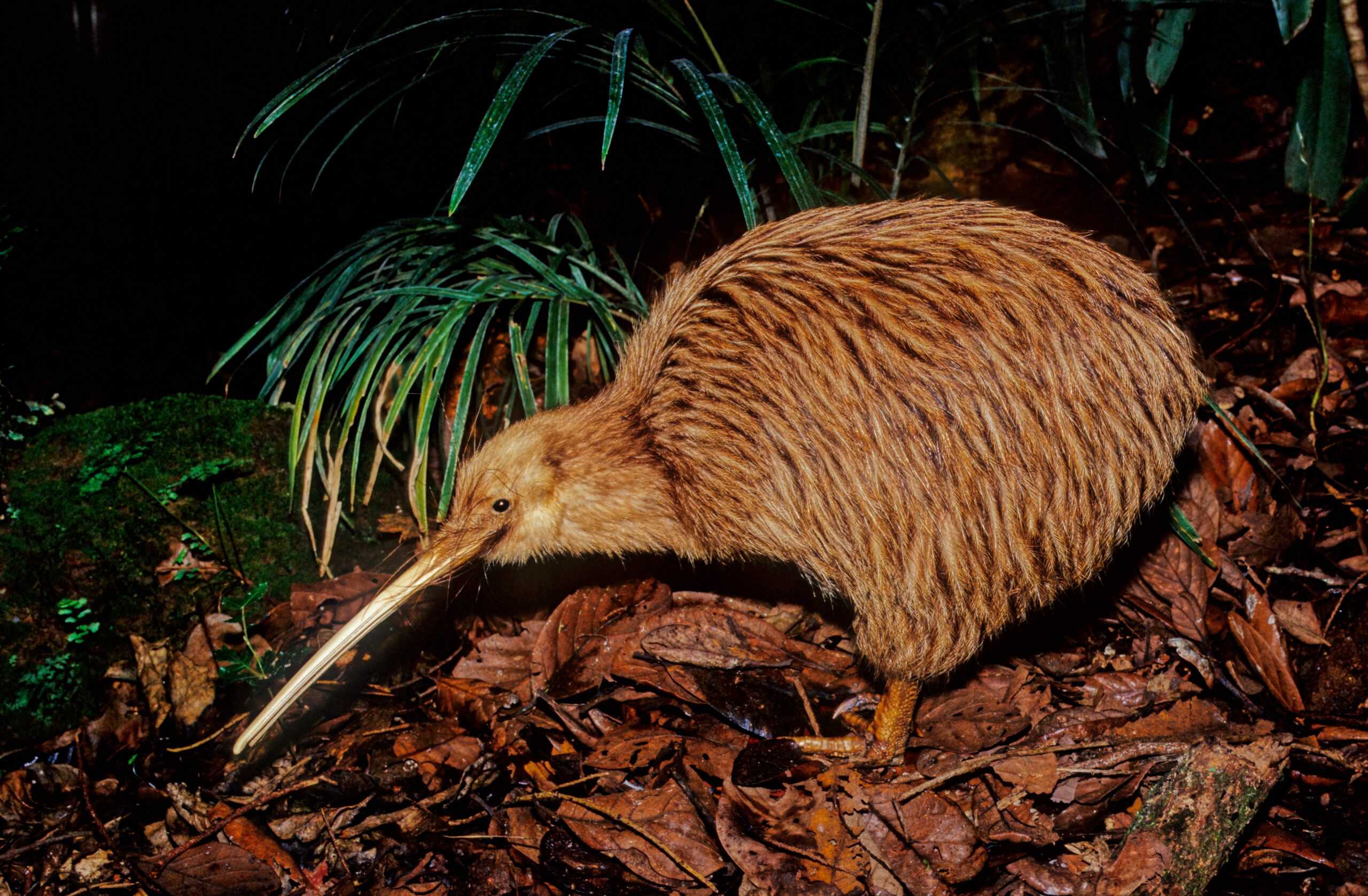
The Brown Kiwi is a flightless bird native to New Zealand. It has a long, curved beak and small wings, making it an adept forager. Kiwis are nocturnal, using their excellent sense of smell to locate food. Their diet consists mainly of insects, worms, and fruits. Kiwis are solitary and have a unique breeding behavior. The female lays a large egg, and the male incubates it. Habitat destruction, introduced predators, and human activities threaten their populations. Kiwis are an iconic symbol of New Zealand’s natural heritage.
This article originally appeared on Rarest.org.
More from Rarest.org
13 Elusive Freshwater Fish in Unexplored Rivers

Unexplored rivers hold secrets beneath their waters, teeming with elusive freshwater fish. These unique species captivate scientists and anglers alike. Read More.
The 10 Most Unique Airbnbs You Can Stay In

Looking for a memorable vacation? Unique Airbnbs offer one-of-a-kind experiences. From treehouses to underwater rooms, there’s something for everyone. Read More.
8 Most Fascinating Underwater Ruins

The world’s oceans hide countless secrets. Among them are ancient cities, temples, and monuments submerged by time and tides. Read More.
